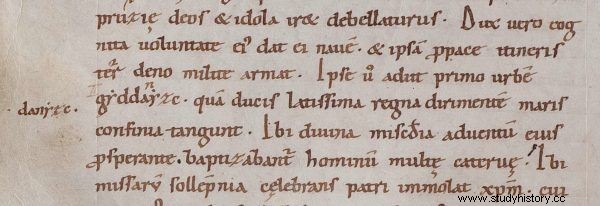Each textbook will tell you that in the times of Mieszko I the entire eastern part of Pomerania belonged to Poland. The prince built a huge trade center in Gdańsk, through which a rapid stream of silver flowed to the center of the state. Archaeologist Sławomir Wadyl questions this vision. In his opinion, there was no Gdańsk at that time.
Archaeological finds do not confirm the thesis about the influx of Arab silver to Poland via East Pomerania - said the aforementioned scientist from the Castle Museum in Malbork. Only three coin treasures dating from 930-960 have been found in the area, but the dating remains uncertain.
Why is it important? The early Piast state, which was developing at that time, needed considerable resources for the construction and maintenance of castles, the princely team, and the organization of the authorities. The key to this process was to control trade routes, including the one leading from Greater Poland to Gdańsk. Gdańsk, which may not have existed yet.

Did Mieszko I rule Gdańsk and Eastern Pomerania already in the middle of the 10th century? (Polish prince in the painting by Jan Matejko "Introduction of Christianity").
Gdańsk wasn't built in a day
Not only silver deposits do not confirm the existence of a strong political and commercial center on the Gdańsk Bay in the middle of the 10th century. As Sławomir Wadyl notes, new archaeological research shows that at that time there was still an emporium in Truso in Prussia. It did not collapse at the beginning of the century, but it operated even until the mid-11th century, so there was no reason for Gdańsk to take over its role, as many historians believe.

Was Gdańsk founded several dozen years later than it was thought? (Fig. the coat of arms of Gdańsk on the image from the 17th century).
Older concepts concerning the beginnings of the city at the confluence of the Vistula and Motława were based, among others, on on the dating of the oldest remains of a medieval castle found there. Recent findings in this regard, based on the dendrochonological method, have made it possible to shift the age of the above-mentioned buildings by as much as one hundred years, to the middle of the 11th century.
The archaeologist from the Malbork museum also writes about written sources that none of them contain any information proving such an early metric (mid-10th century) of the border based on the Gdańsk Bay and the Baltic Sea . In turn, the archaeological material lacks traces of a greater transformation of the settlement and territorial structures in this area.
***
It should be emphasized that Sławomir Wadyl's concept contradicts most of the scientific literature on the beginnings of Gdańsk to date and one should wait if his arguments are well received.

Fragment of the life of St. Wojciech with the visible name Gyddanyzc (fourth line from the top, first word).
One thing can be rather certain, which is also admitted by the cited archaeologist. In 997, there was already a stronghold in Pomerania, where St. Wojciech before he set off for Prussia. The oldest life of a martyr bishop calls this place Gyddanyzc .
The source of the above news is:
Sławomir Wadyl, Did the 10th-century silver influx to the Early Piast state come from Eastern Pomerania? [in:] "Migrations. Journeys in history ”. Antiquity and the Middle Ages [series: " Mare Integrans. Studies on the history of the shores of the Baltic Sea ”], ed. Maciej Franz, Karol Kościelniak, Zbigniew Pilarczyk, Wyd. Adam Marszałek, Toruń 2015.
Historical news. What's the matter?
 | The "historical news" rubric is the latest news from the world of history. We are looking for missed and concealed discoveries of Polish (and not only) scientists. We show that there is always something going on in research on the past. |
 | Our news is short and accessible. On 2-3 thousand signs, we will summarize for you the discoveries that scientists have made on dozens of pages of hermetic works. We only write about what really matters. No boring. |
 | We rely on scientific publications from the last 18 months . In the world of history, news spreads slowly, and academic works reach potential recipients with a long delay. What in other fields ceases to be news after 24 hours in history, it may even be a year later. |
 | When preparing news, we follow the list of the most prestigious historical periodicals. If you are a publisher or author and would like us to reach for a specific publication - please send it to our editorial office. |
